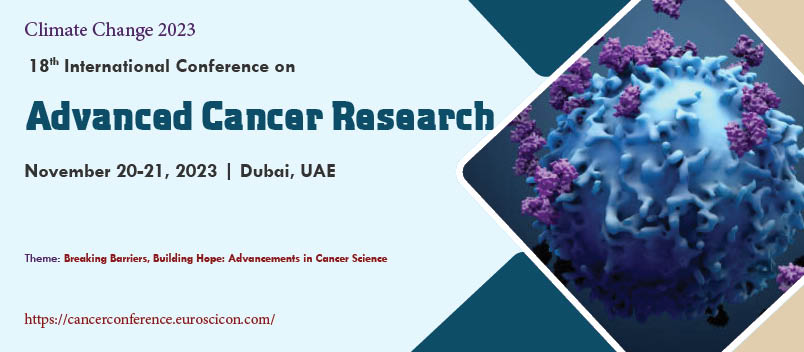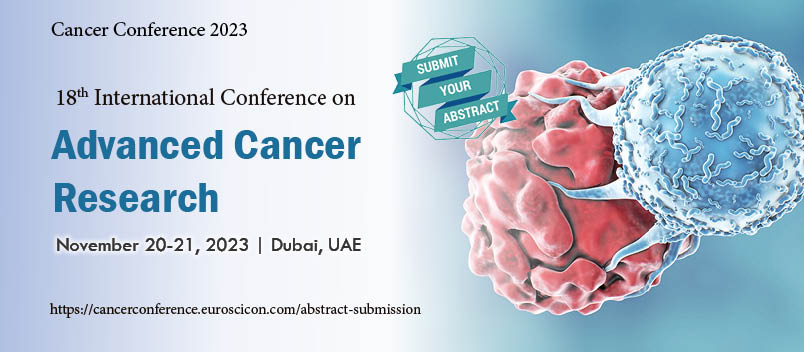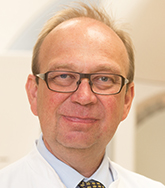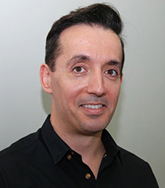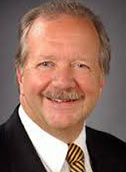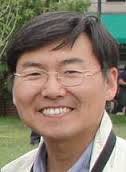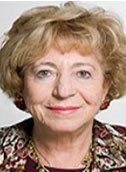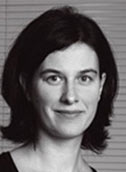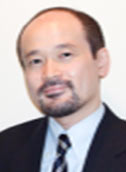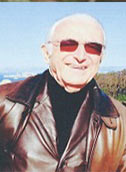CANCER CONFERENCE 2023
ABOUT CONFERENCE
ABOUT CONFERENCE
The EuroSciCon will be organizing the Cancer Research 2023 event which is going to be held in the midst of November 20-21, 2023 focusing on current and future Research in Cancer science. The theme of this year’s meeting is “Decimate the outbreak of COVID-19 through Cancer Research”, which will provide an international platform for discussion and sharing the advancements in the Cancer Science research for present and future expansions in various fields of Cancer. World-leading Oncologist, Health practitioners, educators and researchers will present their novel research and provide an insight to the current research and future expansions in Cancer Science.
What’s new?
Cancer Research 2023 includes international attendee workshops, Lectures, Symposia and Exhibitions. We welcome the world leading experts in the field of Oncology and Cancer Science, who will be sharing their research and will be discussing about advancements and current research in Cancer. So, come and join leading experts and allied professionals on November 20-21, 2023.
- Cancer Immunology
- Chemotherapy
- Oncology
- Breast Cancer
- Cancer Treatments
- Cancer
- Cancer Science
- Carcinogenesis
- Stem Cell & Cancer
About Dubai, UAE
Dubai is the most populous city in the United Arab Emirates (UAE) and the capital of the Emirate of Dubai, the most populated of the 7 emirates of the United Arab Emirates.
In the eastern Arabian Peninsula on the coast of the Persian Gulf, it is also a major global transport hub for passengers and cargo. Oil revenue helped accelerate the development of the city, which was already a major mercantile hub.
A centre for regional and international trade since the early 20th century, Dubai's economy relies on revenues from trade, tourism, aviation, real estate, and financial services. Oil production contributed less than 1 percent of the emirate's GDP in 2018. The city has a population of around 3.49 million.
SESSIONS AND TRACKS
SESSIONS AND TRACKS
Cancer analysis helps to spot causes, and develop methods for hindrance, diagnosis, treatment and cure. Cancer analysis might concern Scientists from Chemistry, organic chemistry, medicine Engineering, Physiology or Molecular background.
- Types of Research
- Fundings in Cancer Research
- Participation of Patients in Cancer Research
- Future of Cancer Research
2: Oncology
Oncology is the branch of medicine that deals with the diagnosis and treatment of cancer. When the cells don't obey the body’s control mechanism then the growth of cells becomes abnormal which results in cancer. Different types of cancer exist, each behaving differently despite its ability to grow, divide, and re-divide.
- Medical Oncology
- Surgical Oncology
- Clinical Oncology
- Radiation Oncology
- Neuro-Oncology
- Computational Oncology
- Exercise Oncology
3: Oncologists
An Oncologist is specialized in the treatment of cancer. Oncologists diagnose cancer and identify treatment options. Oncologists are also known as specialists. The responsibilities are: explaining the cancer diagnosis and stage, when discussing treatment options and their preferred option, providing high-quality, compassionate care Assisting the patient in dealing with the symptoms and side effects of cancer and treatment.
4: Cancer and its types
Cancer is the abnormal and uncontrolled growth of cells that affects normal body tissues. The cancerous cells invade and spread to the other parts of the body through blood and lymph systems. Cancer cells can disrupt normal organ function when they develop. This can lead to a reduction in oxygen supply and the accumulation of waste products. It is possible to die if vital organ function is impaired. Worldwide cancer is the leading cause of death.
5: Cancer stages
Cancer is mainly classified into four stages; the fourth stage is the most dangerous. The early stage of cancer is Stage I which affects a small area. Stage II Cancerous cell grows and doesn’t spread to lymph systems. Stage III Cancerous cells spread to lymph systems and other tissues. Stage IV is known as metastatic or advanced cancer in which the cancerous cells spread to other organs of the body.
6: Oncogenesis
Oncogenesis is the transformation of healthy cells into cancer cells. A series of genetic and cellular changes, including oncogene activation, causes the cell to divide uncontrollably. Oncogenesis which is occurring in cancer patients and cannot be reversed. Many cancer treatments aim to eliminate cancerous cells from the body.
7: The Biology of Cancer
Our cells are genetically designed to perform a variety of tasks throughout our lives. New cells are needed to replace worn-out cells that die in a predictable cycle. When a cell's DNA becomes faulty, the cells can begin to expand uncontrollably, resulting in the formation of a tumor – a 'swelling,' but in the context of cancer, the term refers to abnormal tissue growth.
Biomarkers are those molecules which serve as indicator for the processes that may occur in a body for a disease for which the patient has been diagnosed. Cancer Biomarkers are those biological molecules that may help to detect if a person is having Cancer. Some major examples of Biomarkers that has been used for diagnosis of cancer are, ER/PR (Used for Breast Cancer), Eml4/ALK (used for Lung Cancer). Additionally, biomarkers are generally used in clinical practice to identify patients with favorable prognoses who can safely avoid overtreatment.
- Use of Biomarkers in Cancer Research
- Cancer Biomarker Discovery
- Biomarker Development
- Validation of Biomarkers
- Availability of Cancer Biomarkers
- Biomarkers and Breast Cancer
9: Cancer detection and treatment
Cancer is suspected based on symptoms, physical examination findings, and, in some cases, screening test results. X-rays obtained for other reasons, such as an injury, may occasionally reveal abnormalities that could be cancer. Other tests are required to confirm the presence of cancer (termed diagnostic tests). The majority of people receive a combination of treatments, such as surgery combined with chemotherapy and radiation therapy.
10: Prevention of Cancer
Cancer prevention and risk-reduction efforts significantly lessen the disease's financial, emotional, and physical toll and enhance the general health of cancer survivors, including lowering the risk of developing second cancer.
It is also important to note that not all cancers are avoidable, even though the risk of developing cancer can be significantly decreased by avoiding risk factors.
11: Oncology Pharmacy
Oncology-specialist pharmacists play an important role in the healthcare team. Pharmacists also help with the overall drug plan coordination, which includes everything from inpatient chemotherapy infusions to which pills must be taken at home. Pharmacists are knowledgeable about pharmaceuticals and how they work in the fight against cancer.
12: Chemotherapy
Chemotherapy medications, in general, work by attacking cells or preventing them from growing and dividing. Cancer cells proliferate and divide at an uncontrollable rate. Many chemotherapy drugs are specifically designed to inhibit this type of rapid cell growth. Chemotherapy is a systemic treatment. This means it circulates throughout the body via the bloodstream.
- Intravenous (IV) Chemotherapy
- Oral Chemotherapy
- Injected Chemotherapy
- Chemotherapy into an artery
- Chemotherapy into the peritoneum or abdomen
- Topical Chemotherapy
12: Cancer Radiation Therapy
Radiation Therapy treatment uses high-energy radiation to destroy cancerous cells. The heavy dose of radiation kills the cancer cells and shrinks tumors by damaging their DNA. The body breaks and eliminates the damaged cells when they die.
13: Cancer Nursing
Oncology Nurse is a Specialist who take cares of Cancer patients. Oncology nursing care could be defined as the special care and completing the needs of patients during the time of their disease, while may involve some screening methods and preventive measures that should be taken care of.
14: Clinical Tests
Clinical Tests are the primary means by which doctors discover new treatments. Cancer and other diseases are being studied in clinical tests. Clinical Tests also assist physicians in learning how to prevent disease and treat symptoms and side effects.
- Clinical Trials for new treatments
- Clinical Trials for side effects and symptoms
- Clinical Trials for long-term side effects
- Clinical Trials to prevent
Eating health foods can prevent cancer. Cancer could be cured to some extent if a patient follows good and health diet, which generally includes fruits and raw green leafy vegetables. Some of which includes, Apple, Papaya, Banana, Carrots, Tomatoes, etc which have high antioxidant properties, and thus a potential to cure cancer.
16: Cancer Drugs and Vaccines
Cancer drugs are divided into several categories, including natural products, alkylating agents, hormones, and antimetabolites. Vaccines are given to healthy people to protect them from certain bacteria or viruses that spread diseases. Throughout your life, you will be given numerous vaccines to help prevent common illnesses. Cancer vaccines are also available. There are both cancer prevention and cancer treatment vaccines.
17: Surgical Oncology
Surgical oncology is a branch of medicine dedicated to the surgical treatment of cancer tumors. Chemotherapy, radiation therapy, surgery, hormone therapy, bone marrow transplant, immunotherapy, targeted drug therapy, and other cancer treatment methods are available. A surgical oncologist is essential in multidisciplinary cancer care. They are trained to handle both simple and complex primary and secondary cancer cases.
- Diagnostic Surgery
- Preventive Surgery
- Staging Surgery
- Curative Surgery
- Reconstructive Surgery
- Palliative Surgery
18: Clinical Oncology
Clinical Oncologists are cancer specialists who use a combination of radiotherapy and chemotherapy to treat patients. They are involved in the management of all types of cancer and use a variety of non-surgical treatments to treat cancers. A clinical oncologist’s role is very collaborative.
19: Head and neck cancer
Head and neck cancer begins in the head and throat regions. The major cause of head and neck cancer is the consumption of alcohol and tobacco products. When the head and neck regions are exposed to radiation leads to head and neck cancer.
20: Breast Cancer
Breast cancer occurs when the cells in the breast region grow abnormally. Breast cancer mainly occurs in women and rarely in men. The cancerous cells in the breast can also spread outside via blood vessels and lymph vessels. It is the world’s second leading cause of cancer death among women.
21: Melanoma and Other Skin Cancer
Melanoma, the deadliest form of skin cancer, grows in the cells (melanocytes) that produce melanin, the pigment that gives your skin its color. Melanoma can also develop in the eyes and, in rare cases, inside the body, such as the nose or throat.
Although the exact cause of all melanomas is unknown, exposure to ultraviolet radiation (UV) from sunlight or tanning lamps and beds raises your risk of developing melanoma. Limiting your exposure to UV radiation may help lower your risk of developing melanoma.
- Nodular melanoma
- Lentigo Malinga
- Acral Lentiginous Melanoma
- Superficial Spreading melanoma
- Melanoma in situ
Cancer nanotechnology is a branch of nanotechnology concerned with the application of both nanomaterials (such as nanoparticles for tumor imaging or drug delivery) and nanotechnology approaches (such as nanoparticle-based theranostics) to the diagnosis and treatment of cancer.
23: Cancer Biomedical Advancements
Biomedical instruments are used to help with the diagnosis, monitoring, and treatment of medical conditions. Several new types of cancer treatment equipment, such as:
Ultrasound and radiography - Ultrasound is a non-invasive method of obtaining an image of the internal organs. It is helpful for cancer patients to examine their abdomen for any lymph enlargement or masses.
Linear Accelerator (LINAC) - It emits highly localized radiation (X-rays) and is used in the treatment of cancer. The 6 MeV linear accelerator with surface electron capability allows the treatment of cancer cells even under the subcutis layer overlying the cranium. The connected display unit allows the patient to see his activity as well.
24: Stem Cell Therapy & Cancer Research
Stem cell transplants include process that restores the blood-forming stem cells in people who have had destroyed their cells by the very high doses of chemotherapy or radiation therapy that were used to treat certain cancers. Different types of Stem Cell Transplants include Autologous, Allogeneic and Syngeneic
- Use of Stem Cell in Cancer Treatment
- Stem Cell Transplant Procedures
- Stem Cell Transplant Side Effects
- Types of Stem Cell Transplant
- Challenges in Stem Cell Transplant
25: Molecular Mechanism of Cancer
Cancer generally occurs due to a damage that has been caused to DNA. Genes that regulate the cell division, generally get mutated, due to which their control to cell division is hampered. And thus, result of which is uncontrolled cell division, which then leads to cancer. So, to control cancer (uncontrolled cell division) genes which has lost their ability to act under such conditions, should be activated.
26: Supportive care
Supportive care is an important component of cancer care that is provided in addition to treatments to slow, stop, or cure the disease. According to research, supportive care can improve your quality of life and make you feel more satisfied with your treatment.
MARKET ANALYSIS
Market Analysis
In 2019, the global cancer therapy market was valued at USD 136,254.35 million, and is estimated to be valued at USD 220,701.26 million in 2024, witnessing a CAGR of 8.37%. Factors that are driving the market growth include
- Increased Patient Assistance Programs (PAPs)
- Increased government initiatives for cancer awareness
- Rising prevalence of cancer worldwide
- Strong R&D initiatives from major research in Cancer
Target Therapy Segment is Expected to show the Fastest Growth in the Forecast Period
The target therapy segment is expected to show the highest CAGR of 9.68% during the forecast period. The target therapy basically includes hormone therapies, angiogenesis
inhibitors, immunotherapies, signal transduction inhibitors, gene expression modulators, apoptosis inducers, and toxin delivery molecules. Targeted therapy is getting great importance due to its high specificity toward cancerous cells, while eliminating the toxicity to off-target cells.
The Blood cancer segment is believed to account for the largest market size over the forecast period. This is majorly attributed to the higher and continuously increasing prevalence of breast cancer across the world. Over 2,66,120 new cases of invasive blood cancer are expected to be diagnosed in men, women, small children in the US, as per estimated by the Blood Cancer Organizations in 2019 along with 63,960 new cases of non-invasive (in situ) blood cancer.
North America currently dominates the market for cancer therapy. This region is expected to increase its market share in the future, owing to the increased adoption of cancer therapy. The United States holds majority of the market in the North American region, due to the rising prevalence of cancer in the country. In 2016, 1.6 million people suffered from cancer, and around 0.5 million people died from cancer, as reported by the National Cancer Institute (NCI). This figure indicates that the prevalence of cancer is rapidly increasing in the United States.
